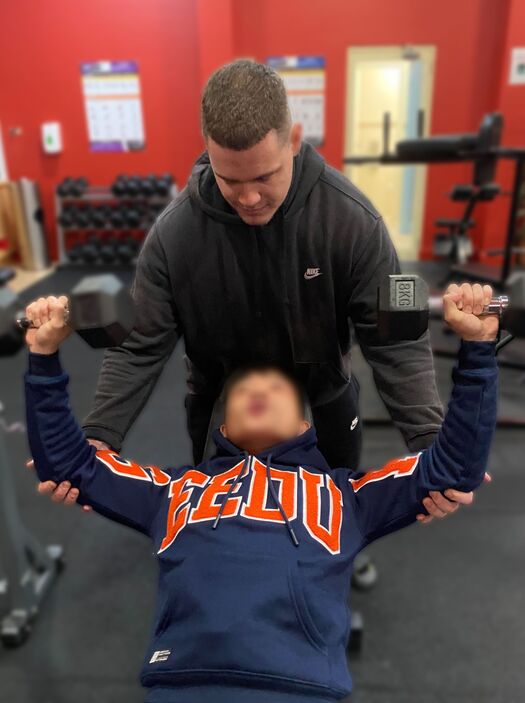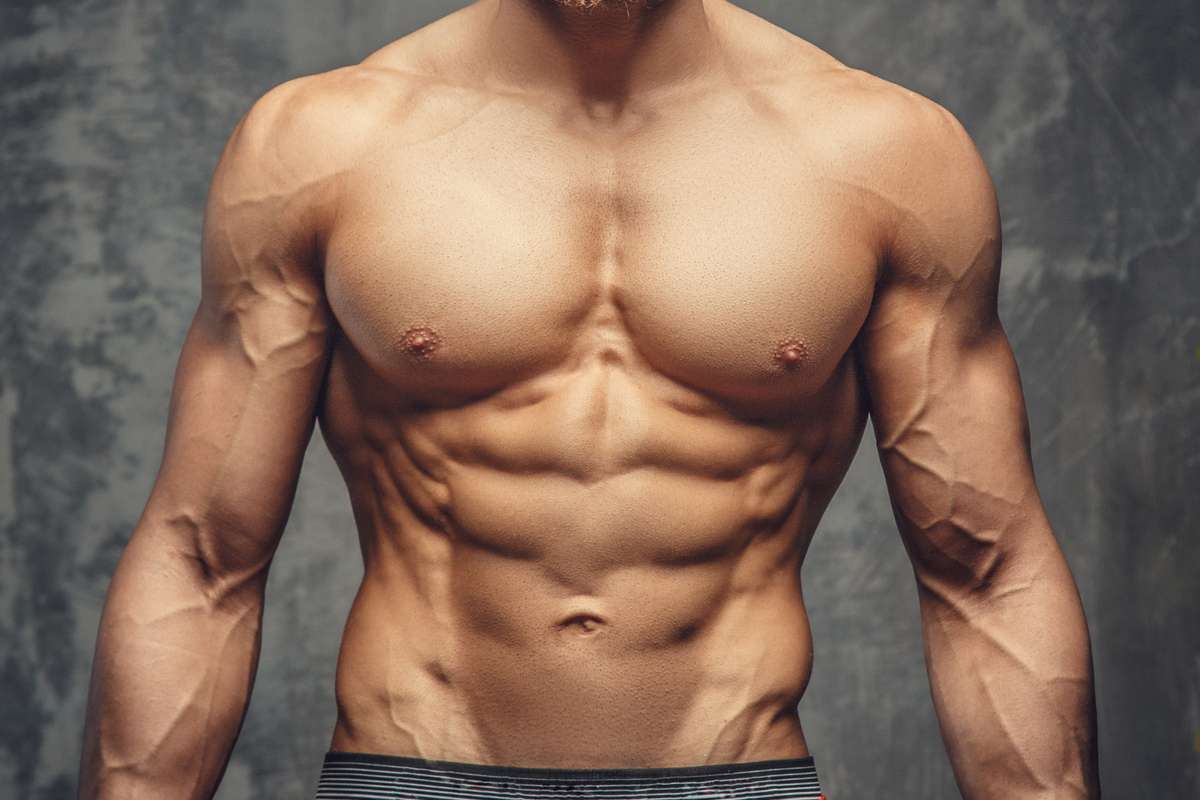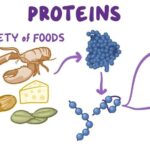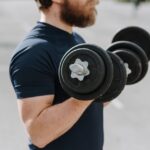The pectoral muscles, often simply referred to as the “pecs,” are the powerhouse of the upper body. These muscles form the bulk of the chest and play a pivotal role in many upper body movements, from pushing to lifting. To build a massive chest dosen’t mean you only achieve aesthetics; it also contributes to overall upper body strength and stability. Whether you’re pushing through a workout or simply moving through daily activities, the pectorals are at work, supporting and stabilizing your movements.
The pectoral muscle group comprises two primary muscles: the pectoralis major and the pectoralis minor. The pectoralis major is the larger of the two, covering most of the chest and giving it its shape. The pectoralis minor lies beneath the major and helps in stabilizing the shoulder blade. Together, these muscles enable movements like pushing, lifting, and rotating the arms. When properly developed, they contribute to a broad, powerful chest, enhancing both performance and appearance.
Focusing on building muscle mass in the chest can lead to numerous benefits. A well-defined chest improves upper body strength, aids in better posture, and can significantly enhance athletic performance. Moreover, for those interested in bodybuilding or general fitness, a muscular chest is a key aspect of an aesthetically pleasing physique. With the right exercises and training methods, you can effectively target and grow your pectoral muscles, achieving the muscle mass and definition you desire.
Did You Know Diet Is The Most Important Part Of Muscle Building?
Diet Plan for Massive Chest: Your Ultimate Guide to Pectoral Muscle Gains
Are you on a mission to build a massive chest and achieve those dream pectoral muscles? If so, you probably already know that while exercises like bench presses and push-ups are essential, they’re only part of the equation. The food you eat is just as crucial. Nutrition can make or break your muscle-building goals, especially when it comes to targeting the chest area. In this ultimate guide, we’ll explore how to optimize your diet to fuel muscle growth and help you achieve those impressive pectoral gains.

Understanding Pectoral Muscles
Anatomy of the Pectoral Muscles
Before diving into the diet specifics, it’s important to understand the muscles you’re working on. The chest is primarily made up of the pectoralis major and pectoralis minor. The pectoralis major is the larger muscle, responsible for most of the chest’s size and shape. It covers the upper part of the chest and attaches to the humerus, allowing movements such as pushing, lifting, and rotating the arm. The pectoralis minor is a smaller, triangular muscle located underneath the pectoralis major. Together, these muscles give the chest its mass and definition.
Role of Nutrition in Muscle Development
Just like building a house, muscle development requires the right materials. You wouldn’t build with straw if you wanted a sturdy structure, right? The same logic applies here. Muscles need protein to grow, carbohydrates for energy, and fats for hormone production and overall health. Providing your body with the right nutrients ensures that your workouts are effective and your muscles recover and grow properly.
Macronutrients for Chest Muscle Gains
The Power of Protein
Protein is the building block of muscle tissue. When you work out, especially during resistance training, you create tiny tears in your muscle fibers. Consuming protein helps repair these tears, leading to muscle growth.
Sources of Lean Protein
To maximize your chest gains, focus on high-quality, lean protein sources such as chicken breast, turkey, lean beef, fish, eggs, and plant-based options like beans, lentils, and tofu. These foods provide essential amino acids that are crucial for muscle repair and growth.
Timing Your Protein Intake
Timing is key when it comes to protein intake. Aim to consume protein throughout the day, ideally every 3-4 hours. Also, include a protein-rich meal or shake within 30 minutes post-workout to kickstart muscle recovery and growth.
Carbohydrates: Fuel for Growth
Carbs are your body’s primary source of energy, especially during intense workouts. They help replenish glycogen stores, which are depleted during exercise, and provide the energy needed for muscle contractions.
Complex vs. Simple Carbs
For muscle growth, prioritize complex carbohydrates like whole grains, oatmeal, sweet potatoes, and quinoa. These carbs release energy slowly, providing sustained fuel for your workouts and recovery.
Carbs and Workout Performance
Consuming carbs before a workout can significantly enhance performance, allowing you to push harder and stimulate more muscle growth. A small, balanced snack 30-60 minutes before your workout can do wonders for your energy levels.
Healthy Fats for Hormone Production
While fats are often overlooked in muscle-building diets, they play a vital role in hormone production, particularly testosterone, which is essential for muscle growth.
Importance of Fats in Muscle Building
Healthy fats help in the absorption of vitamins and minerals, provide energy, and are crucial for maintaining hormone levels.
Best Sources of Healthy Fats
Include sources of unsaturated fats like avocados, nuts, seeds, olive oil, and fatty fish in your diet. These fats support overall health and can aid in muscle-building efforts by optimizing hormone levels.
Micronutrients and Supplements
Essential Vitamins and Minerals
Micronutrients might not be the star of the show, but they’re vital for muscle function and recovery. Vitamins and minerals support various body functions, including muscle contraction and repair.
Role of Vitamin D and Calcium
Vitamin D and calcium are essential for bone health and muscle function. Vitamin D helps in the absorption of calcium, which is critical for muscle contractions. Foods like dairy products, leafy greens, and fortified foods can help you meet your calcium needs.
Importance of Magnesium and Zinc
Magnesium aids in muscle relaxation and recovery, while zinc supports immune function and protein synthesis. Include foods like nuts, seeds, and whole grains to ensure adequate intake.
Beneficial Supplements for Muscle Growth
While a balanced diet should cover most of your nutritional needs, some supplements can provide an extra boost in your muscle-building journey.
Whey Protein
Whey protein is a quick-digesting protein that’s perfect post-workout. It provides all essential amino acids required for muscle repair and growth.
BCAAs (Branched-Chain Amino Acids)
BCAAs can help reduce muscle soreness and accelerate recovery. They’re especially beneficial if you’re working out intensely and frequently.
Creatine
Creatine is one of the most researched supplements and is proven to increase muscle mass and strength. It helps produce more ATP (energy) during high-intensity workouts, allowing you to lift heavier and train harder.
Sample Diet Plan for Building a Massive Chest
Pre-Workout Nutrition
Before hitting the gym, fueling your body is essential. Aim for a balanced meal or snack with carbs and protein to provide energy and support muscle growth.
What to Eat Before Your Chest Workout
A pre-workout meal could include oatmeal with a scoop of protein powder and some berries or whole-grain toast with peanut butter and a banana. These options provide a good balance of carbs and protein to power through your workout.
Importance of Hydration
Don’t forget about hydration. Water is crucial for maintaining muscle function and overall performance. Drink at least 16-20 ounces of water 2 hours before your workout and continue sipping during your session.
Post-Workout Nutrition
After your workout, your muscles are primed to absorb nutrients. This is the time to replenish glycogen stores and provide your muscles with the protein needed for recovery.
Optimal Post-Workout Meals
A post-workout meal should include protein and carbs. Think of grilled chicken with quinoa and veggies or a protein shake with a banana and some spinach.
Role of Protein Shakes
Protein shakes are a convenient way to get a quick dose of protein post-workout. Look for a whey protein powder that provides at least 20-25 grams of protein per serving.
Daily Meal Plan – Build A Massive Chest
Here’s a sample daily meal plan focused on muscle growth:
Breakfast
- Scrambled eggs with spinach and whole-grain toast
- A serving of Greek yogurt with nuts and berries
Lunch
- Grilled chicken breast with brown rice and steamed broccoli
- Lentil soup with a side of whole-grain bread
Dinner
- Baked salmon with sweet potatoes and asparagus
- Quinoa salad with black beans, avocado, and mixed greens
Snacks
- Cottage cheese with pineapple
- Hummus with carrot sticks
- A handful of almonds
Timing and Frequency of Meals
Importance of Meal Timing
Timing your meals can significantly impact muscle growth. Eating at regular intervals ensures your muscles have a steady supply of nutrients to aid recovery and growth.
How Often Should You Eat?
Aim for 4-6 smaller meals or snacks throughout the day. This approach helps maintain energy levels, supports metabolism, and provides a constant supply of nutrients to your muscles.
Hydration and Muscle Growth
Why Staying Hydrated is Crucial
Muscles are composed of about 75% water, making hydration crucial for muscle function and growth. Dehydration can lead to muscle cramps, fatigue, and decreased performance.
Tips for Proper Hydration
To stay hydrated, aim to drink at least 8-10 glasses of water daily. Increase your intake if you’re sweating heavily during workouts. Adding a pinch of salt to your water can help replenish electrolytes lost through sweat.
Foods to Avoid for Maximum Gains
Processed Foods and Sugars
Processed foods and sugars provide empty calories and can lead to weight gain and inflammation, hindering muscle growth. Opt for whole, nutrient-dense foods instead.
High-Sodium Foods
Excessive sodium can lead to water retention and bloating, masking muscle definition. Keep your sodium intake in check by avoiding processed foods and seasoning with herbs and spices instead.
Alcohol and Its Effects on Muscle Building
Alcohol can interfere with muscle recovery and growth by impairing protein synthesis. If you’re serious about building muscle, limit alcohol consumption to ensure optimal results.
Build A Massive Chest
Customizing Your Diet Plan
Adjusting for Your Body Type
Everyone’s body responds differently to diet and exercise. Some may need more protein, while others might benefit from additional carbs or fats. Experiment and adjust your diet to see what works best for your body. Your calorie intake can differ greatly depending on your body size, activity, and metabolism.
Listening to Your Body’s Signals
Pay attention to how your body feels and performs. If you’re constantly tired or not seeing the desired results, you may need to tweak your diet or meal timing.
Warm-Up Routine for Chest Workouts
Before doing your chest workout, prepare your muscles with a proper warm-up. Warming up increases blood flow to the muscles, improves flexibility, and reduces the risk of injury. For chest exercises, focus on dynamic stretches that target the pectorals and shoulders. These stretches not only loosen the muscles but also activate them, priming them for the workout ahead.
Dynamic Stretches for Chest Activation
- Arm Circles: Stand tall with arms extended to the sides. Make small circles with your arms, gradually increasing the size. Perform 15-20 circles in each direction to mobilize the shoulder joints.
- Chest Openers: Stand with feet shoulder-width apart, clasp your hands behind your back, and straighten your arms. Lift your arms slightly while keeping your chest lifted. Hold for 15-20 seconds to stretch the pectoral muscles.
- Reistance Band Stretches: Hold a resistance band with both hands in front of you, arms extended. Pull the band apart while keeping your arms straight, engaging the chest muscles. Perform 2 sets of 10 repetitions to activate the pectorals.
Personalized Chest Exercise Plan
To build mass in the pectoral muscles, your workout should include a mix of compound and isolation exercises. Compound exercises like the bench press engage multiple muscle groups, while isolation exercises like dumbbell flyes specifically target the pectorals. Here’s a tailored chest workout program:

Exercise 1: Barbell Bench Press
- Description: Lie flat on a bench with your feet firmly on the ground. Grip the barbell with hands slightly wider than shoulder-width apart. Lower the bar to your chest, then press it back up until your arms are fully extended.
- Repetitions and Sets: 4 sets of 8-10 repetitions.
- Technique Tip: Keep your back flat against the bench and avoid bouncing the bar off your chest.
Exercise 2: Dumbbell Flyes
- Description: Lie on a flat bench with a dumbbell in each hand, palms facing each other. With a slight bend in your elbows, lower the dumbbells out to the sides, feeling a stretch in your chest. Bring the dumbbells back up to the starting position.
- Repetitions and Sets: 3 sets of 10-12 repetitions.
- Technique Tip: Focus on the stretch at the bottom of the movement and avoid overextending your arms.
Exercise 3: Incline Dumbbell Press
- Description: Set an incline bench to a 30-45 degree angle. Hold a dumbbell in each hand at shoulder level, palms facing forward. Press the dumbbells upward until your arms are fully extended, then lower them back to the starting position.
- Repetitions and Sets: 4 sets of 8-10 repetitions.
- Technique Tip: Keep your feet firmly planted on the ground and your core engaged.
Exercise 4: Push-Ups
- Description: Get into a plank position with hands slightly wider than shoulder-width apart. Lower your body until your chest nearly touches the floor, then push yourself back up to the starting position.
- Repetitions and Sets: 3 sets of 15-20 repetitions.
- Technique Tip: Maintain a straight line from your head to your heels and avoid letting your hips sag.
Incorporating Supersets for Maximum Gains
Supersets involve performing two exercises back-to-back with little to no rest in between. This method is highly effective for building muscle mass as it keeps the muscles under tension for longer periods, leading to greater hypertrophy.
Suggested Superset Combination:
- Superset 1: Barbell Bench Press followed by Push-Ups
- Superset 2: Incline Dumbbell Press followed by Dumbbell Flyes
Performing these supersets will intensify your workout, challenging the pectorals to grow.
Cool-Down Routine After Chest Workouts
Cooling down after your workout is just as important as warming up. It helps to gradually lower your heart rate and prevent muscle stiffness. Incorporate static stretches that target the chest and shoulders to enhance flexibility and reduce soreness.
Static Stretches for Pectoral Muscles
- Cross-Body Shoulder Stretch: Bring one arm across your body at shoulder height and hold it with the opposite hand. Hold for 20-30 seconds on each side.
- Wall-Assisted Chest Stretch: Stand facing a wall, place one hand on the wall at shoulder height, and gently turn your body away from the wall. Hold for 20-30 seconds on each side.
Combining Chest Workouts with Other Muscle Groups
Training your chest in combination with other muscle groups can enhance your workout efficiency. The chest works synergistically with the triceps and shoulders during pushing movements, making these muscle groups ideal to train together. For example, pairing chest exercises with tricep workouts can lead to a more comprehensive upper body session.
Pre-Care and Aftercare Tips
Before your workout, make sure to hydrate and consume a light meal rich in protein and carbs to fuel your session. After the workout, focus on recovery.
FAQs – Build A Massive Chest
How long does it take to see results?
Results can vary based on factors like diet, workout intensity, and genetics. Generally, with a consistent diet and exercise plan, you can start seeing noticeable changes in your chest muscles within 4-6 weeks.
Can I build chest muscles without supplements?
Yes, supplements are not necessary if you’re eating a balanced diet rich in protein, carbs, and healthy fats. However, supplements can provide additional support, especially if you have specific dietary restrictions or high protein needs.
How important is sleep for muscle growth?
Sleep is crucial for muscle recovery and growth. During sleep, your body repairs muscle tissues and releases growth hormones. Aim for 7-9 hours of quality sleep each night.
What if I miss a meal?
Missing a meal occasionally won’t derail your progress, but try to eat regularly to maintain energy levels and support muscle growth. If you miss a meal, have a balanced snack to make up for it.
Should I change my diet plan if I plateau?
If you hit a plateau, consider adjusting your diet by increasing protein intake or altering your workout routine. Sometimes, small changes can jumpstart progress again.
What are the best exercises for building pectoral muscles?
The most effective exercises for building pectoral muscles are compound movements that target the chest from different angles. The bench press (flat, incline, and decline) is considered one of the best exercises for overall chest development. Other key exercises include dumbbell presses, push-ups, chest flyes, and cable crossovers. Incorporating a variety of these exercises into your routine ensures that all areas of the chest are adequately targeted, promoting balanced muscle growth.
How often should I train my chest to see results?
For most people, training the chest 2-3 times per week is optimal for muscle growth. This frequency allows for adequate recovery while providing enough stimulus for muscle development. It’s important to allow at least 48 hours of rest between intense chest workouts to ensure that muscles have time to repair and grow stronger. Listening to your body and adjusting the frequency based on your individual recovery and progress is also crucial.
Is it better to use free weights or machines for building chest muscles?
Both free weights and machines have their place in a chest workout routine. Free weights (like dumbbells and barbells) are great for building functional strength and muscle size because they engage stabilizing muscles and allow for a greater range of motion. Machines, on the other hand, can provide more targeted muscle isolation and are useful for focusing on specific parts of the chest without the need for as much stabilization. Incorporating a mix of both free weights and machines can help maximize muscle growth and strength.
Should I focus more on heavy weights or high reps for chest development?
Both heavy weights (low reps) and high reps (lighter weights) can be effective for building chest muscles, depending on your goals. Heavy weights with lower reps (4-6 reps) are typically used for building maximal strength and stimulating muscle hypertrophy in the fast-twitch muscle fibers. Higher reps with lighter weights (8-12 reps) can help improve muscular endurance and target slow-twitch fibers. For optimal chest development, it’s beneficial to include a combination of both heavy and lighter sets in your workout routine.
Can I build a bigger chest without weights?
Yes, you can build a bigger chest without weights by using bodyweight exercises and resistance bands. Exercises like push-ups (including variations like decline, incline, and diamond push-ups) are excellent for targeting the chest. Dips, isometric holds, and plyometric push-ups are also effective bodyweight exercises that can build chest muscles. Using resistance bands for exercises such as banded chest flyes or banded push-ups can add an extra challenge and further stimulate muscle growth. While weights are highly effective, bodyweight exercises can still lead to significant chest development if done consistently and with proper intensity.





